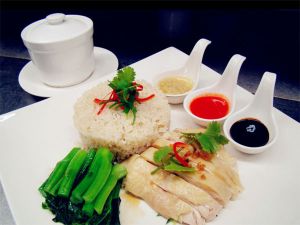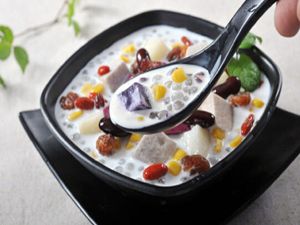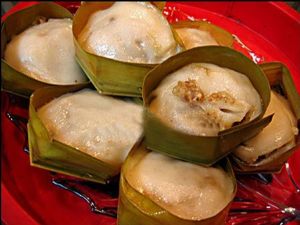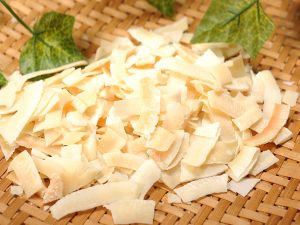Hainan Food
Introduce
Hainan cuisine, or Hainanese cuisine, is derived from the cooking styles of the peoples of Hainan Province in China. The food is lighter, less oily, and more mildly seasoned than that of the Chinese mainland. Seafood predominates the menu, as prawn, crab, and freshwater and ocean fish are widely available.
Congee, mantou and baozi are eaten for breakfast, with a noodle dish also being widely eaten. This consists of fine, vermicelli-type noodles with various toppings and gravy. Along with lunch and dinner, late night outdoor barbecue dishes are also served.
Culture
After more than two thousand years of development, Hainan cuisine not only has the cooking methods of Fujian and Guangdong coastal provinces, but also absorbs the food culture of Li, Miao people and local aborigines, and introduces specialties from Southeast Asia and other places. Hainan relies on its unique nature. The resource advantage is rich in many rare and rare sea treasures. In Hainan, you can enjoy the taste of fresh seafood and original taste.
Famous Food
| Name | Image | Traditional Chinese | Simplified Chinese | Pinyin | Description |
|---|---|---|---|---|---|
| Dongshan lamb | 東山羊 | 东山羊 | Dōngshān yáng | braised in coconut milk. | |
| Hele crab | 和樂蟹 | 和乐蟹 | Hélè xiè | Hele Town near Wanning, located on the southeastern shores of Hainan. The yellow meat of the crab has an oily texture and a strong aroma. It is usually served with ginger and garlic in vinegar, after being steamed. | |
| Jiaji duck | 嘉積鴨 | 嘉积鸭 | Jiājī yā | Originating from Qionghai by the Wanquan River, Jiaji duck is made from steamed or boiled duck that was previously force-fed a blend of cereal and bean curd three times daily. | |
| Wenchang chicken | 文昌雞 | 文昌鸡 | Wénchāng jī | This dish, originating in Wenchang, is made from a certain type of free range chicken. The chicken is boiled and then cut into pieces. It is then eaten by dipping the pieces in a mixture of spices, including chopped ginger and salt. The chicken skin is typically yellow, with an oily appearance.[1] |
Dongshan Mutton 东山羊
One of the four most famous dishes in Hainan is Dongshan Lamb or Mutton. Originally from Wanning, Hainan, this dish isn't the standard type of mutton. It doesn't have the typical mutton taste because it can be stewed, roasted or braised in coconut milk. It is very tender and soft and often comes with a thick soup for a full dish.
Jiaji Duck 嘉积鸭
The Jiaji Ducks are raised along the Wanquan River in Jiaji Town, Qionghai City. As they grows, this special breed is kept in coops and fed with rice, grain, sweet potato, and chaff. The meat is thick, the skin is thin, the bone is soft and there is very little fat. The cooking way of Jiaji Duck is also particular. The traditional way to prepare which it is to boil it in water, dice it, then eat with mixture of vinegar, chopped ginger and sesame oil.
Hele Crab 和乐蟹
Hele Crab originated from Hele Town, near Wanning, located on the southeastern shores of Hainan. The yellow meat of the crab has an oily texture, and a strong aroma. Hele Crab tastes best if steamed and accompanied with ginger together with vinegar. It maintains the original taste of the crab and tastes especially fresh and delicate. It is best eaten in autumn.
Wenchang Chicken 文昌鸡
The Wenchang Chicken is so named because it was first produced in Wenchang City. The chicken is free-range and on a high protein diet. The most traditional way to prepare Wenchang Chicken is "white cutting", which involves immersing the chicken in almost boiling hot water and cooked to preserve its softness and tenderness. It is then eaten by dipping the pieces in a mixture of spices including ginger and salt. All star-rated hotels and the major Hainan style restaurants can serve this dish.
Street Food
Hainan Hot Pot 海南火锅
Like most regional cuisines in China, Hainan has its own variation on the classic, shareable meal, mostly focussed on its fresh seafood. In Sanya, fresh seafood is available all year round so this dish can be enjoyed in the summer or winter. The pot is relatively small as far as hot pots go. A typical seafood hotpot includes an assortment of seafood such as nutritious fish head, prawns, clams, crab, as well as plates of green vegetables for dipping in the pale soup bases.
Hainan Lobster 龙虾
Since lobsters live in shallow waters of tropical areas, you can get some pretty awesome fresh lobster right off the coast of Sanya. In Hainan, people eat the lobster raw with mustard or they fry them in oil. The meat is fresh, slippery and soft. Depending on the type of lobster you get (there are a few different types in Hainan), the lobsters claws maybe be big or small.
Turtle and Snake Tonic Soup 鲍鱼烩五蛇羹
Turtle and Snake Soup is special to Hainan and has been used as a Traditional Chinese Medicine to prolong life in ancient China. Thanks to Hainan's temperate climate, lots of snakes and turtles live near Sanya. Because of the believed health properties associated with eating snake, lots of traditional Hainan restaurants serve this soup.
Hainan Breakfast Noodles 海南粉
If you weren't aware yet, noodles are a very popular breakfast staple for lots of regional Chinese cuisines. Originally, this dish was created in northern Hainan in Haikou, and was loved by urban residents of the island, but later spread to the rest of the cities. In Hainan, the noodles are made from rice flour and are usually topped with meat sauce, roasted peanuts and strips of bamboo.
Wanquan Carp 万泉鲤
The Wanquan River in Hainan is home to four different types of a fish called Cyprinoid, which is a type of freshwater fish including carps and suckers. In Hainan, these fish are aplenty in the Wanquan River and you can get them fresh in most parts of the island. The fish is typically poached, steamed or eaten in hot pot then covered liberally in sweet and sour sauce. The fish is rich in essential nutrients and delicious.
Hainanese Chicken Rice 海南鸡饭
Hainanese Chicken Rice is probably more well known in Singapore and Malaysia than the namesake of the dish, Hainan. This dish is actually based on another dish on this list, Wenchang Chicken, but with a little twist. The entire chicken is poached in traditional Hainanese style. The stock from boiling the chicken is used in cooking the rice to make it oily. The chicken's skin is jelly-like from being dipped in ice after it's finished boiling. It comes with a dipping sauce, usually red chili with garlic and soy sauce.[2]
Drink
Calamansi is a popular local citrus fruit that was created years ago by crossing mandarin oranges and kumquats. Tart and flavoursome, it goes brilliantly with black or green tea, and either combination can be found at stalls all over Hainan.
If it’s hot make sure you try one of the island’s most delicious sweet treats: Hainan mango roll. Fresh slices of mango are wrapped in diaphanous rolls of rice paper and topped with mango sauce. Each one is a little work of art on a plate.
Or if it’s really hot try fried ice: fruits of your choice – the local mango is amazing – blended with condensed milk and then flash-frozen into sweet and creamy sorbets. They’re an instant hit with children.[3]
Dessert
In addition to an abundance of fresh tropical fruit, you can find various desserts in Haikou from ice creams, creamy puddings to fruity smoothies. Despite it seemingly random list of ingredients you must try qingbuliang, a cool local sweet and cold dessert soup served in a glass bowl. This tropical snack which varies slightly from town to town contains chilled coconut milk with ice, watermelon, pineapple, raisins, sweet potatoes, peas, macaroni and jujube. Chaobing, literally means "fried ice" and is a freshly made sorbet-like dessert. You choose the fresh tropical fruit which is then blended, strained, and then poured into a special device that freezes the mixture on contact. Due to extreme low temps the chilling process produces a very fine ice crystal that results in a super smooth sorbet.
Snacks
Use of rice and coconut highlights many of Hainan's snacks. Haikou people are used to eating rice noodles for breakfast. In Haikou, you will find sticky rice pair well with coconut in many delightful chewy snacks, for example, yezifan (sticky rice in coconut) and yibua (glutinous coconut rice cake wrapped with banana leaf), and dried coconut pieces.[4]




